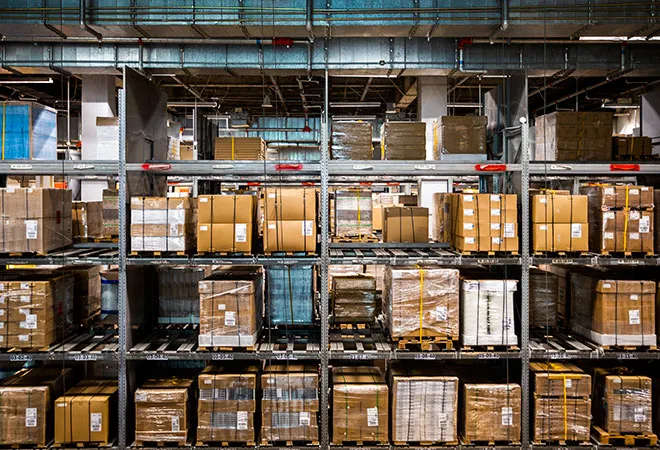
There is a palpable churning in geopolitics and geoeconomics taking place; the US-China trade war, the outbreak of the COVID-19 pandemic, and a breakdown of the multilateral system are forcing an evaluation and reconfiguration of global supply chains. The relocation of global supply chains that began with the US-China trade war was further catalysed by the pandemic, which lifted the veil on the grave vulnerabilities in production networks of essential commodities.
Today there is global consensus that nations have to design their foreign trade policy in a manner that addresses vulnerabilities, manages disruptions, and reduces concentration. India has a unique chance to leverage these developments to attract global value chains, especially by exploring partnerships with strategically and geopolitically aligned nations such as the members of the Quad.
India’s supply chain resilience agenda can be guided by three principles: financing for resilience, attracting technology multinationals, and addressing raw-material dependencies.
Within the Quad, India’s supply chain resilience agenda can be guided by three principles: financing for resilience, attracting technology multinationals, and addressing raw-material dependencies.
First, India’s foreign direct and foreign institutional investments come mainly from the capital-rich countries of the G7 and OECD such as the US, UK, Europe, and Japan through financial centres such as Singapore, the Netherlands, and Mauritius. India can be an ‘economic pivot’ for the Quad in the Indo-Pacific if the Quad can commit financing to support its entry into Quad-led global supply chains. Though the Quad has declared that among its objectives are “mobilisation of private finance for development finance” and “enhancing the impact of multilateral public finance”,<1> most of the initiatives remain unfunded. Even the Supply Chain Resilience Initiative has yet to be backed by any serious joint funding commitments.
Without support, capital-intensive industries such as automobiles and telecommunications will be impossible to move. For instance, a 2020 study by McKinsey found that Dell and Lenovo, the world’s largest computer companies based in the US and China, respectively, have between 4,000 to 5,000 tier 1 and tier 2 suppliers with a remarkable 2000 of them in common.<2> Such corporate dependency is impossible for most policymakers and businesses to fathom, let alone decouple.
India can be an ‘economic pivot’ for the Quad in the Indo-Pacific if the Quad can commit financing to support its entry into Quad-led global supply chains.
Second, India must seek entry into global value chains of the future, particularly those focused on electronics, electrical machinery, and telecommunications. Nearly 40 percent of all FDI into India since 2000 has flowed to these sectors.<3> Electronics manufacturing has grown at a CAGR of nearly 23 percent in the last five years, with domestic production of electronics hardware touching $76 billion in 2019-20.<4> Still, India remains worryingly dependent on China, particularly on electrical machinery: China constitutes nearly 60 percent of the country’s imports in that segment.<5> The global market for IT hardware is dominated by seven companies which account for about 70 percent of the world's market share.<6> Therefore, the most recent commitment by the Government of India of $7 billion for Large-Scale Electronics Manufacturing, along with nearly a billion dollars for IT hardware, shows that the government is serious about positioning India as a global hub for Electronics System Design and Manufacturing (ESDM).
Unfortunately, just as India is preparing to globalise, Western multinationals are in the process of de-globalising by reshoring or near-shoring their activities. According to the World Investment Report 2020, the average ‘transnationality’ of multinationals—an indicator that tracks their relative share of foreign assets, sales and employees—has stagnated at 65 percent in the past decade. Multinationals have a choice of diversifying their supply chains to manage risks arising from climate change, conflicts and pandemics.<7> For Western multinationals to choose diversification to India over reshoring, the strategic benefits must be made more compelling by the Quad.
A Paulson Institute analysis found a high degree of concentration and inter-dependence in supply chains for lithium-ion batteries, chips and sophisticated displays between Japan, South Korea, Taiwan, US, and China.
Third, India has to diversify its own supply chains, particularly those on which it is most dependent. The early days of the COVID-19 pandemic revealed the world’s dependency on pharmaceutical APIs, 70 percent of which come from China. Similarly, the critical minerals that India needs for new-age industries such as electronics and renewable energy come from limited sources. The International Energy Agency reports that China extracts 60 percent of rare-earths and 64 percent of graphite, but it also processes 58 percent of lithium, 65 percent of cobalt, 35 percent of nickel, and 40 percent of copper. Similarly, nearly 70 percent of cobalt is extracted from the Democratic Republic of Congo, 33 percent of nickel, from Indonesia and 22 percent of lithium from Chile. India is estimated to have the fifth largest deposits of rare-earths but accounts for only 2 percent of global production.<8>
A Paulson Institute analysis found a high degree of concentration and inter-dependence in supply chains for lithium-ion batteries, chips and sophisticated displays between Japan, South Korea, Taiwan, US, and China.<9> While the R&D lies with the US, UK, Japan and Taiwan, China leads in fabrication and assembly, as well in providing crucial raw material. With investments from the Quad, India can develop its own base of rare-earths and even collaborate on developing technologies that rely less on these critical minerals.
The first-ever in-person meeting of Quad Leaders in Washington D.C. on 24 September is an opportune time for India to table its own supply chain resilience agenda for the grouping.
This piece is part of ORF’s Special Report No. 161, The Rise and Rise of the ‘Quad’: Setting an Agenda for India | ORF (orfonline.org)
Endnotes
<1> The White House Briefing Room. “Fact Sheet: President Biden and G7 Leaders Launch Build Back Better World (B3W) Partnership.” The White House. 2021.
<2> Lund et al. Risk, resilience, and rebalancing in global value chains. McKinsey Global Institute. 2020, pp. 9.
<3> Department for Promotion of Industry and Internal Trade. 2021. “Fact Sheet on Foreign Direct Investment (FDI) from April, 2000 to June, 2021.” DPIIT, Government of India. June.
<4> Invest India. Schemes for Electronics Manufacturing. 2021.
<5> Dr.V.S.Seshadri, Amb. (Retd.). RCEP: A Possible Approach Considering China’s Already Large Presence in The Indian Market. Confederation of Indian Industry (CII). 2018, pp. 83.
<6> Ministry of Electronics & IT, GoI. Cabinet approves Production Linked Incentive Scheme for IT Hardware. PIB Delhi. 2021.
<7> UNCTAD. World Investment Report, 2020. New York: United Nations. 2020, pp. 23.
<8> Kanisetti et al. A Rare Earths Strategy for India. Takshashila Institution. 2020.
<9> Ma, Damien, Houze Song, and Neil Thomas. “Supply Chain Jigsaw: Piecing Together the Future Global Economy.” Marco Polo. 13` April. 2020.
The views expressed above belong to the author(s). ORF research and analyses now available on Telegram! Click here to access our curated content — blogs, longforms and interviews.




 PREV
PREV


